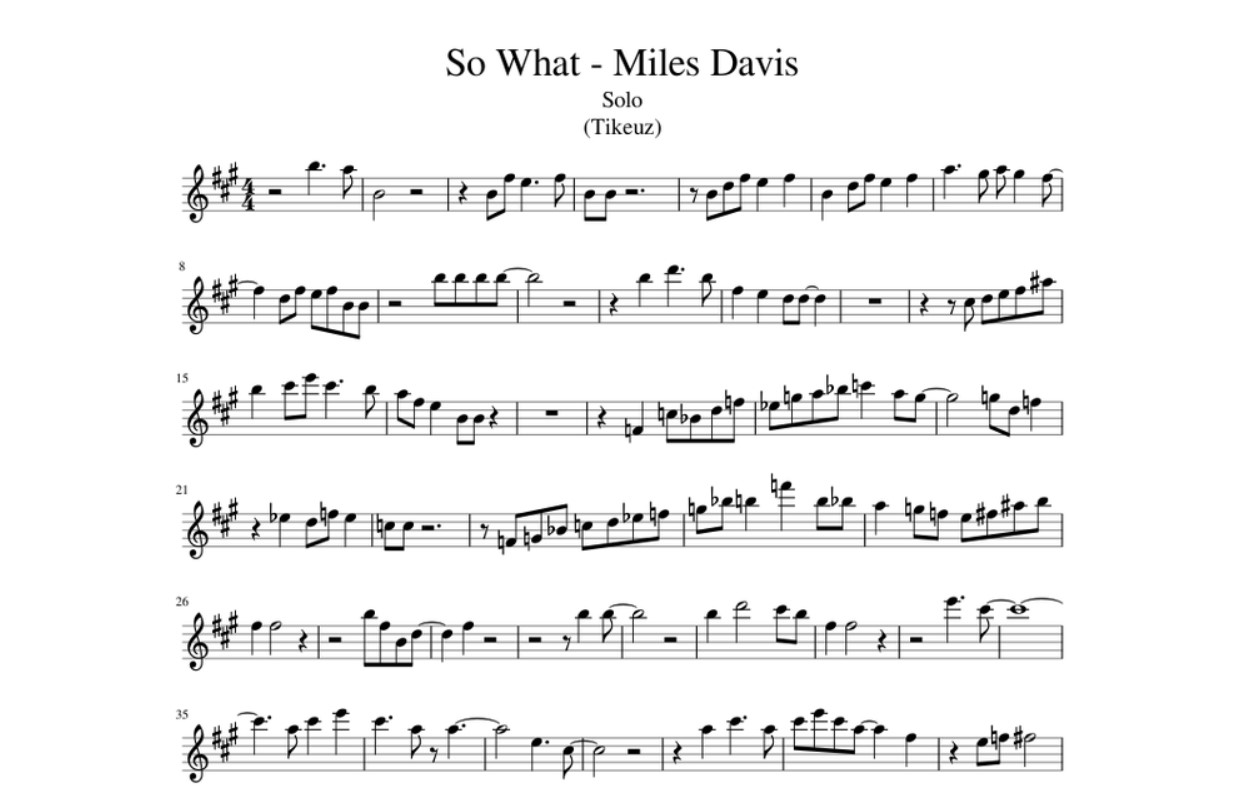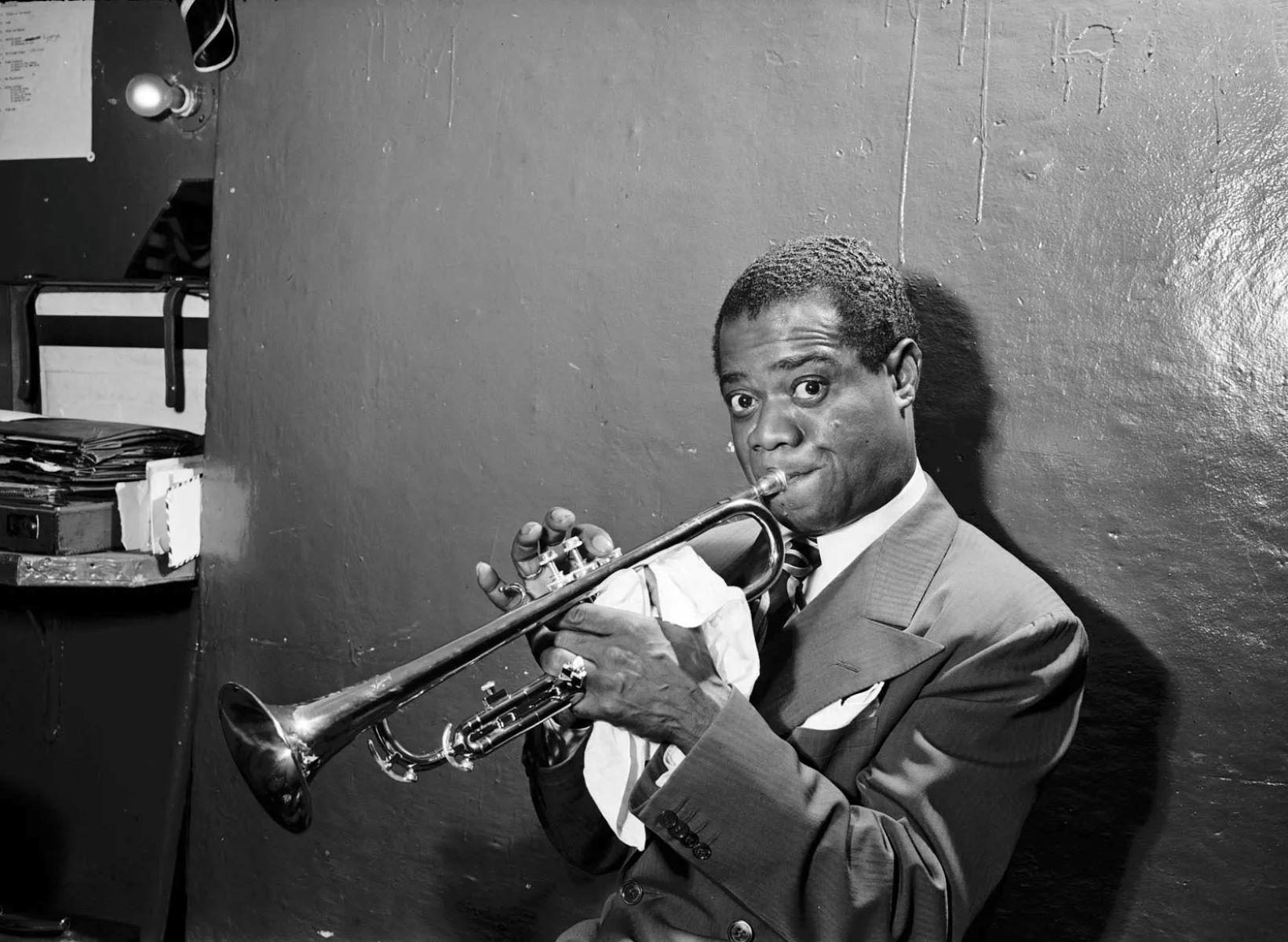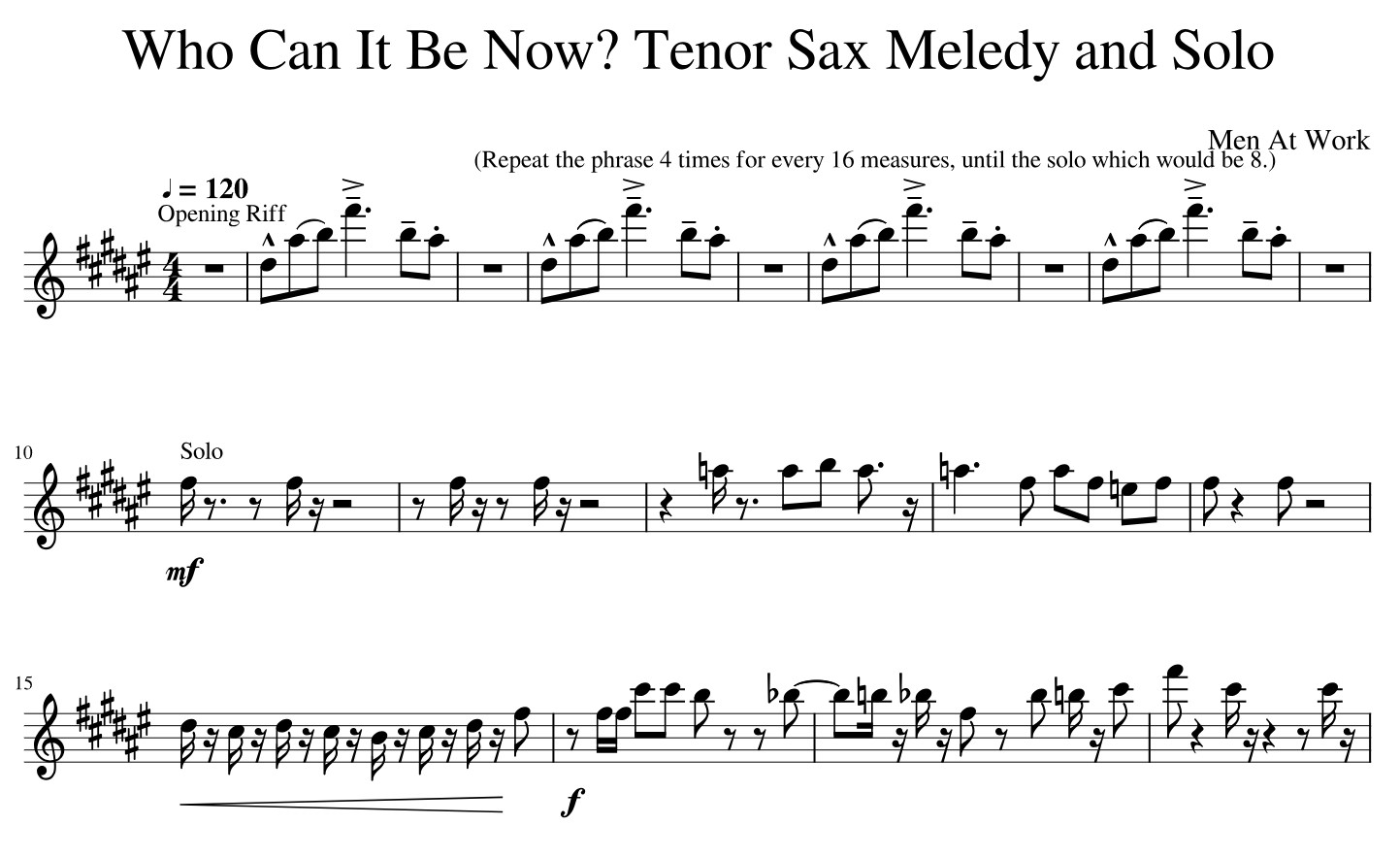

Jazz
How To Play Jazz Sax
Modified: January 29, 2024
Learn how to play jazz sax with our comprehensive guide. Discover essential techniques, scales, and improvisation tips to master the art of jazz.
(Many of the links in this article redirect to a specific reviewed product. Your purchase of these products through affiliate links helps to generate commission for AudioLover.com, at no extra cost. Learn more)
Table of Contents
Introduction
Welcome to the world of jazz saxophone! Whether you are a beginner looking to learn the basics or an experienced player seeking to deepen your knowledge and skills, this comprehensive guide will provide you with the tools and techniques to become a proficient jazz saxophonist.
Jazz music, with its emphasis on improvisation, syncopation, and complex harmonies, has captivated audiences for over a century. The saxophone, with its rich and expressive sound, is perfectly suited to the genre, making it one of the most popular instruments in jazz.
Before delving into the intricacies of jazz saxophone playing, it is important to have a solid foundation. This includes choosing the right saxophone, understanding basic saxophone techniques, and grasping the fundamentals of jazz music theory.
In this guide, we will explore various facets of playing jazz saxophone, including improvisation techniques, mastering articulation and phrasing, developing a good tone, and applying jazz saxophone techniques effectively. We will also discuss strategies for practicing and offer tips to help you improve your skills more efficiently.
Whether you aspire to join a jazz ensemble, perform on stage, or simply enjoy playing jazz music as a hobby, this guide will serve as your roadmap on your journey to becoming a skilled jazz saxophonist. So grab your saxophone, get ready to dive into the wonderful world of jazz, and let’s begin our adventure together!
Choosing the Right Saxophone
Choosing the right saxophone is a crucial first step in your journey to becoming a jazz saxophonist. There are various types of saxophones, including the soprano, alto, tenor, and baritone saxophone. Each type has its own unique sound and characteristics, so it’s important to consider which one best suits your playing style and musical preferences.
If you’re just starting out, the alto saxophone is a popular choice. It has a versatile sound that works well in various genres, including jazz. The tenor saxophone, with its deeper and richer tone, is also commonly used in jazz music. It’s important to try out different saxophones and see which one feels most comfortable and sounds the best to you.
In addition to the type of saxophone, you’ll need to consider the quality and budget. While it’s tempting to opt for a cheaper saxophone, investing in a good quality instrument is essential for achieving a rich and professional sound. Look for a saxophone made from high-quality materials and reputable brands. If you’re on a budget, consider purchasing a used saxophone that has been well-maintained.
Another factor to consider is the setup of the saxophone. This includes the mouthpiece, ligature, and reed. Experimenting with different combinations of these components can have a significant impact on your sound and playability. It’s advisable to seek guidance from experienced players or a music store professional to help you find a setup that suits your style.
Lastly, don’t forget about comfort and ergonomics. Playing the saxophone requires physical strength and endurance, so choose a saxophone that feels comfortable in your hands and allows for ease of finger movement. Consider factors such as key placement, weight, and overall design to ensure a comfortable playing experience.
Remember, choosing the right saxophone is a personal decision that will greatly impact your playing journey. Take the time to explore different options and seek guidance from professionals to find the saxophone that best fits your musical aspirations and needs.
Basic Saxophone Techniques
Before diving into the world of jazz saxophone, it’s important to grasp the basic techniques that will form the foundation of your playing. Here are some essential techniques to focus on:
- Proper embouchure: Start by forming a firm but relaxed embouchure, which is the position of your lips and facial muscles around the mouthpiece. Practice maintaining a consistent and controlled embouchure to produce a clear and focused sound.
- Correct hand and finger placement: Position your hands on the keys with your fingers curved and covering the necessary keys. Develop agility and dexterity by practicing scales, arpeggios, and exercises that involve traversing the saxophone’s range.
- Breathing and breath control: Learn to take deep breaths from your diaphragm to produce a steady stream of air. Practice long tones and focus on sustaining a smooth and even sound throughout each note.
- Tonguing: Master the art of tonguing, which involves using your tongue to articulate each note. Practice different tonguing techniques such as single tonguing, double tonguing, and triple tonguing to add variety to your playing.
- Intonation: Work on playing in tune by developing your ear and adjusting your embouchure and finger placement as needed. Use a tuner to regularly check your intonation and make necessary adjustments.
- Articulation: Experiment with different articulation styles, such as legato (smooth and connected), staccato (short and detached), and accents. Learn to vary your articulation to add expression and phrasing to your playing.
- Dynamic control: Practice playing at various dynamic levels, from soft (piano) to loud (forte). Learn how to control your breath and embouchure to achieve a wide range of dynamics and expressiveness in your playing.
These basic techniques may seem simple, but they are essential building blocks for your saxophone playing. Spend dedicated practice time on these fundamental skills to develop a strong foundation, and continuously refine them as you progress on your jazz saxophone journey.
Understanding Jazz Music Theory
When it comes to playing jazz saxophone, having a solid understanding of jazz music theory is essential. Jazz is a complex and harmonically rich genre that requires knowledge of chord progressions, scales, and modes. Here are some key concepts to focus on:
- Chord progressions: Jazz tunes are often based on specific chord progressions, such as the ii-V-I progression. Learn to identify and analyze chord progressions, as they provide the harmonic framework for improvisation and soloing.
- Scales and modes: Become familiar with commonly used scales and modes in jazz, such as the major scale, the melodic minor scale, the blues scale, and various modes of the major and melodic minor scales. Practice these scales in different keys and explore how they can be used over different chords.
- Harmony and voicings: Understand the concept of jazz harmony, including different chord qualities (major, minor, dominant, etc.) and extended chords (7th chords, 9th chords, etc.). Study different voicings and chord inversions to create interesting harmonies in your playing.
- Rhythm and swing: Jazz is known for its unique rhythmic feel and swing. Study swing rhythms, syncopation, and various rhythmic patterns to capture the essence of jazz and develop a sense of groove in your playing.
- Form and structure: Analyze jazz compositions and understand the common musical forms used, such as the blues, AABA form, and modal tunes. This will help you navigate through different sections and anticipate musical changes.
- Transcribing and analyzing jazz solos: Listen to and transcribe solos by jazz saxophone legends. Analyze their melodic and rhythmic ideas, phrasing, and use of jazz language. This will deepen your understanding of jazz improvisation and help you develop your own unique voice on the instrument.
Learning jazz music theory is an ongoing process, so be patient and persistent in your studies. Familiarize yourself with the vocabulary, concepts, and techniques discussed above, and apply them to your practice and improvisation. Over time, you’ll gain a deeper understanding of jazz music and be able to navigate the complex harmonic landscape with ease.
Improvisation Techniques
Improvisation is at the heart of jazz saxophone playing. Being able to create spontaneous melodies and solos is what sets jazz apart from other genres. Here are some essential improvisation techniques to develop your improvisational skills:
- Ear training: Develop your ear through activities such as transcribing solos, singing along with jazz recordings, and practicing melodic dictation exercises. Ear training will help you internalize the sounds and language of jazz, enabling you to translate what you hear in your head to your instrument.
- Learn jazz vocabulary: Study commonly used jazz phrases, licks, and patterns played by jazz saxophone greats. Internalize these melodic ideas and incorporate them into your playing. This will help build your jazz vocabulary and provide a strong foundation for improvisation.
- Understanding chord progressions: Analyze the chord progressions of jazz tunes and understand how each chord relates to the scale and mode choices for improvisation. Learn to target chord tones, anticipate harmonic changes, and create melodic tension and release within the context of the progression.
- Rhythmic variation: Experiment with different rhythmic patterns, syncopation, and phrasing to add interest and energy to your improvisations. Make use of rests, accents, and varying note durations to create rhythmic tension and dynamics.
- Improvise over different tempos: Practice improvisation at different tempos, ranging from slow and relaxed to fast and challenging. This will help you develop your sense of time, phrasing, and the ability to think quickly on the spot.
- Use dynamics and expression: Explore the full range of dynamic possibilities on your saxophone, from soft and delicate to loud and powerful. Utilize techniques such as crescendos, decrescendos, and subtle changes in tone to add expression and emotion to your improvisations.
- Develop your own style: While studying the techniques of jazz saxophone legends is important, it’s equally crucial to develop your own unique voice and style. Experiment with different approaches, explore your own musical ideas, and strive to express your individuality through your improvisations.
Remember, improvisation is a skill that develops over time with practice and experience. Be patient with yourself and keep exploring new ideas and concepts. Gradually, you’ll develop confidence in your ability to improvise and express yourself through your saxophone playing.
Learning Jazz Repertoire
Building a repertoire of jazz tunes is crucial for any jazz saxophonist. Learning and performing jazz standards will not only improve your playing skills but also deepen your understanding of the genre. Here are some tips for learning jazz repertoire:
- Start with the classics: Begin by studying iconic jazz standards such as “Autumn Leaves,” “All the Things You Are,” and “Take the A Train.” These tunes have timeless melodies and chord progressions that are essential for any jazz musician to know.
- Listen to recordings: Immerse yourself in recordings of jazz tunes played by renowned saxophonists and jazz ensembles. Pay attention to their interpretations, improvised solos, and overall musicality. Listening to different versions of the same tune will expose you to various approaches and inspire your own playing.
- Analyze the harmony: Study the chord progressions and analyze the harmonies of each tune. Identify the key centers, modulations, and any unique chord changes. Understand the relationships between the chords and their corresponding scales and modes, which will guide your improvisation.
- Learn the melodies: Internalize the melodies of the tunes by practicing them on your saxophone. Pay attention to the phrasing, nuances, and articulation used by the original performers. This will help you capture the essence of the tune and allow for more expressive improvisation.
- Study different arrangements: Explore different arrangements and interpretations of the tunes. Look for sheet music, fake books, or lead sheets that provide notated versions of the melodies and chord changes. Experiment with different voicings, variations, and rhythmic approaches as you develop your own arrangements.
- Play with others: Collaborate with fellow musicians and jam with jazz ensembles. Playing with others will enhance your musicality, improvisation skills, and ability to interact in a group setting. It also provides opportunities to explore different interpretations and takes on the tunes.
- Expand your repertoire: Once you have a solid foundation of jazz standards, continue to expand your repertoire by learning lesser-known tunes, compositions by modern jazz artists, and tunes specific to sub-genres of jazz. This will add variety and depth to your playing repertoire.
Learning jazz repertoire is an ongoing and rewarding process. By building a diverse collection of tunes, you’ll have a strong musical foundation and be prepared for various performance opportunities, whether jam sessions, gigs, or formal concerts. So, keep exploring and discovering new tunes to broaden your jazz saxophone horizons.
Mastering Articulation and Phrasing
Articulation and phrasing are essential elements of jazz saxophone playing that can greatly enhance your musical expression and interpretation. Mastering these techniques will enable you to bring life and emotion to your performances. Here are some tips to help you develop your articulation and phrasing:
- Vary your articulation: Experiment with different articulation techniques such as tonguing, slurring, and staccato to convey different musical ideas and moods. Utilize legato lines for smooth and connected phrases, or incorporate staccato and tongued notes for more accentuated and rhythmic effects.
- Pay attention to attack and release: Focus on the way you initiate and end each note. Practice starting notes cleanly and precisely, and ensure that each note has a clear and defined ending. This will contribute to a more polished and professional sound.
- Emphasize dynamics: Use dynamic contrasts to add depth and emotional impact to your playing. Experiment with soft, intimate passages and build to powerful crescendos. This contrast in dynamics will captivate listeners and bring your performance to life.
- Study great saxophonists: Listen to recordings of revered jazz saxophonists, such as Charlie Parker, John Coltrane, or Sonny Rollins, and study their articulation and phrasing. Analyze their use of accents, subtle pauses, and rhythmic variations. Incorporate these ideas into your own playing to develop a unique and expressive style.
- Practice long, fluid lines: Work on playing long, connected lines that span across several bars. This will help you develop a sense of continuity and flow in your phrasing. Focus on maintaining a smooth and even tone throughout each line, allowing your ideas to evolve and develop naturally.
- Use rhythmic motifs: Create rhythmic motifs or patterns and incorporate them into your improvisation and melodies. These motifs can add a memorable and cohesive element to your playing, serving as a recurring theme throughout your performance.
- Listen to vocalists: Jazz vocalists excel in delivering melodic lines with expressive phrasing and articulation. Take inspiration from their performances and incorporate some of their techniques into your saxophone playing. This will help you infuse more lyrical qualities into your improvisation.
Remember, articulation and phrasing are not just technical aspects of playing the saxophone. They are critical tools for communication and self-expression through music. As you continue to develop your skills in these areas, you’ll be able to convey your musical ideas with clarity, emotion, and finesse.
Developing a Good Tone
Developing a good tone on your saxophone is essential for creating a captivating and expressive sound. A beautiful tone enhances your playing and engages listeners, making it a fundamental aspect of jazz saxophone performance. Here are some tips to help you develop a solid and pleasing tone:
- Focus on proper breath support: Good tone starts with proper breath control. Practice taking deep breaths from your diaphragm, allowing your stomach to expand as you inhale. This will help you produce a steady stream of air, resulting in a full and resonant sound.
- Master your embouchure: The embouchure, the position of your lips and facial muscles around the mouthpiece, plays a crucial role in tone production. Aim for a firm yet relaxed embouchure that allows for a clear and focused sound. Experiment with different lip positions and mouthpiece placements to find what works best for you.
- Listen to your sound: Train your ears to listen critically to your own playing. Record yourself and listen back to identify areas that need improvement. Pay attention to the quality of your tone, intonation, and consistency throughout your range. Use this feedback to make necessary adjustments and refine your sound.
- Practice long tones: Set aside dedicated practice time for long tones. Start with a comfortable pitch and sustain it for as long as possible, focusing on maintaining a supported and even tone. Gradually expand your range and experiment with different dynamics and articulation techniques to further develop your tone.
- Experiment with mouthpiece and reed combinations: The choice of mouthpiece and reed can greatly influence your tone. Try different combinations to find the setup that works best for you, considering factors such as responsiveness, brightness, and projection. Seek guidance from experienced saxophonists or visit a reputable music store for recommendations.
- Seek guidance from a teacher: Working with a saxophone teacher can provide valuable guidance and feedback on your tone production. They can offer personalized exercises and techniques to help you develop a beautiful sound. They may also identify areas of tension or inefficiency in your playing that are hindering your tone.
- Listen to experienced saxophonists: Immerse yourself in recordings of accomplished jazz saxophonists and pay attention to their tone. Study their approach to tone production, their use of vibrato, and their overall sound quality. Listening to skilled players will inspire and inspire you to strive for a richer and more expressive tone.
Remember that developing a good tone takes time and consistency. Be patient and diligent in your practice, and focus on maintaining a relaxed and resonant sound. With dedicated effort, you’ll gradually develop a tone that captivates audiences and sets you apart as a skilled jazz saxophonist.
Applying Jazz Saxophone Techniques
Once you’ve learned the basic saxophone techniques and acquired a solid foundation in jazz music theory, it’s time to apply those skills to your playing. Here are some ways to incorporate jazz saxophone techniques into your musical expression:
- Experiment with improvisation: Improvisation is a hallmark of jazz music. Apply the scales, modes, and chord progressions you’ve learned to create melodic improvisations. Start by soloing over simple tunes and gradually incorporate more complex harmonic concepts into your improvisations.
- Embrace jazz articulations: In jazz, articulation styles such as scoops, bends, smears, and glissandos are commonly used for expressive playing. Experiment with these techniques to add personality and authenticity to your sound. Incorporating these unique articulations will give your playing a distinct jazz flavor.
- Explore jazz phrasing: Jazz phrasing emphasizes syncopation and rhythmic variation. Experiment with different rhythmic patterns and accents to create interesting and engaging phrases. Focus on creating tension and release within your melodies by varying note durations and emphasizing certain tones for added expression.
- Learn standard jazz licks: Study and practice classic jazz licks and phrases played by legendary saxophonists. Incorporate these licks into your improvisations to add a touch of tradition and pay homage to the jazz masters who came before you. Over time, you’ll be able to create your own unique variations on these classic ideas.
- Develop a sense of swing: Swing is a fundamental element of jazz music. Work on your rhythmic feel and groove by listening to and playing along with jazz recordings. Pay attention to the swing rhythm and try to internalize and replicate that feel in your own playing. This rhythmic foundation will bring authenticity to your jazz saxophone performance.
- Collaborate with other musicians: Jazz is often performed in an ensemble setting. Seek opportunities to play with other musicians, whether in jam sessions or formal band settings. Collaborating with fellow musicians will allow you to work on communication, improvisation, and developing a cohesive group sound.
- Apply dynamics and expression: Use dynamics to bring your playing to life. Practice controlling your volume and experimenting with different dynamic levels. Varying your dynamics can add drama and excitement to your solos and bring out the nuances of the music.
As you apply these jazz saxophone techniques, remember that music is an art form, and each player’s interpretation is unique. Allow your personal expression to shine through as you experiment, explore, and develop your own style. Keep practicing and listening to jazz music to continue growing as a jazz saxophonist.
Practicing Strategies and Tips
Effective and deliberate practice is crucial for improving your jazz saxophone skills. Here are some strategies and tips to help you make the most out of your practice sessions:
- Establish a consistent practice routine: Set aside dedicated practice time each day or week to ensure regular and consistent practice. Consistency is key for building muscle memory, improving technique, and internalizing musical concepts.
- Warm up and focus on fundamentals: Start your practice session with warm-up exercises to loosen your fingers, lips, and breath. Then, focus on fundamental techniques such as scales, arpeggios, and tone exercises. These exercises will reinforce technical proficiency and prepare you for more challenging playing.
- Break it down: When learning a new piece or improvisational concept, break it down into smaller sections. Practice each section slowly, focusing on accuracy and precision. Gradually increase the tempo as you become more comfortable.
- Work on challenging passages: Identify challenging passages, whether in a piece of music or during improvisation, and isolate them for focused practice. Slow down the tempo, use a metronome if necessary, and practice with a deliberate, mindful approach to gradually build speed and accuracy.
- Listen actively: Actively listen to jazz recordings, paying close attention to the saxophone solos. Notice the nuances in phrasing, articulation, and tone. Use these recordings as inspiration and reference points for your own playing.
- Record and evaluate your playing: Record yourself during practice sessions and performances to evaluate your progress. Listen critically to your recordings, identifying areas of improvement and areas where you excel. Use this feedback to set goals and target specific areas for development.
- Vary your practice routine: Keep your practice sessions engaging by incorporating a variety of exercises and repertoire. Practice scales, etudes, jazz standards, transcriptions, and improvisation exercises to develop a well-rounded skill set.
- Seek feedback and guidance: Work with a knowledgeable saxophone teacher or mentor who can provide feedback, guidance, and personalized exercises tailored to your needs. Their expertise will help accelerate your progress and ensure that you develop proper technique and musicianship.
- Stay motivated and have fun: While practicing requires discipline and dedication, it’s important to stay motivated and enjoy the journey. Explore different styles of jazz, learn tunes that inspire you, and find joy in the process of improvement. Remember to take breaks when needed and find balance between practice and leisure.
By implementing these strategies and tips, you’ll maximize the effectiveness of your practice sessions and make significant strides in your jazz saxophone playing. Remember that practice is an ongoing process, so be patient, persistent, and open to continual growth.
Conclusion
Congratulations on embarking on your journey to become a skilled jazz saxophonist! By following the techniques and strategies outlined in this guide, you have the resources to develop a strong foundation in jazz saxophone playing.
Throughout this guide, we explored various aspects of jazz saxophone, including choosing the right instrument, mastering basic techniques, understanding jazz music theory, developing improvisation skills, building a jazz repertoire, perfecting articulation and phrasing, cultivating a beautiful tone, and applying jazz saxophone techniques effectively. Practicing with intention, seeking guidance, and immersing yourself in the world of jazz music will accelerate your progress and allow you to express your unique musical voice.
Remember that becoming a proficient jazz saxophonist requires dedication, patience, and a lifelong commitment to learning and growing. Regular practice, active listening, collaboration with other musicians, and a continuous desire to explore new concepts and ideas will contribute to your development as a jazz musician.
As you progress on your journey, be open to new experiences, attending jazz performances, and connecting with other musicians who share your passion. Embrace challenges and setbacks as opportunities for growth and keep your love for music at the forefront of your playing.
Now, pick up your saxophone, let the soulful melodies of jazz inspire you, and embark on your exciting musical adventure. With these foundational tools and a passion for jazz, there is no limit to what you can achieve on the saxophone. Enjoy the journey and the joy of making music!











